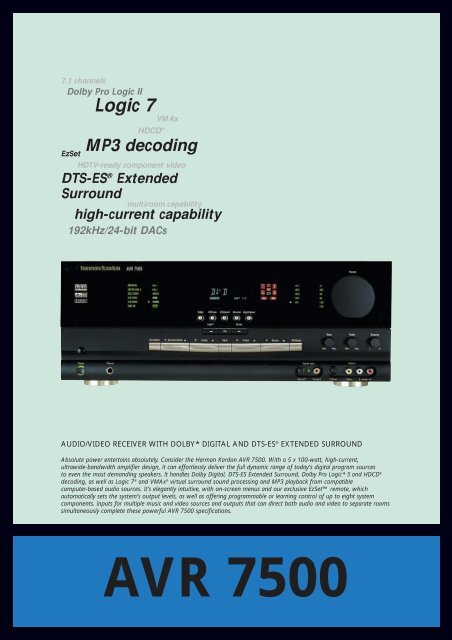

The 5 surround channels include 3 front channels (left, right, and center channels) and 2 surround channels (left and right surrounds).įor a receiver or any other sound processor to decode DD codecs, it needs to have the processing mode capable of decoding it to create an electrical sound signal. This codec is made up of 6 discrete channels that include 5 surround channels and one LFE channel for the Low-Frequency Effects to create an immersive sound.
DTS DECODER TO DOLBY PROLOGIC MOVIE
Dolby Digital explainedĭolby Digital is also known as a DD or AC-3 is a lossy surround sound compression codec brought to us by Dolby Labs and was first used in 1992 in the movie Batman Returns. It all comes down to your preference and how well you can notice subtle nuances in the sound quality by both. The more data a sound processor has to work with, the better the decoded information and sound-quality will be.īut by my experience, you need a very high-quality sound system to hear differences between the two codecs and processing modes. This means that DD can compensate for the differences in codec details with faster processing speeds but the bit information stored by DTS is too large to compensate with decoding. However, Dolby claims to have better and more effective decoding speeds than DTS, a claim that has been echoed by other experts in the surround sound industry.

DTS DECODER TO DOLBY PROLOGIC PLUS
This is a huge gap as far as sampling rates are concerned and it even widens once you get into the specific modes such as 6.0 megabits per second for DTS-HD and 1.7 megabits per second in Dolby Digital Plus which are two very similar formats. This is because DTS uses a bit rate of 1.5 megabits per second with the sampling rates going as low as 768 kilobits per second in DVDs.ĭolby Digital, on the other hand, compresses surround sound files at 640 kilobits per second which can go to as low as 448 kilobits per second. However, the compression in DTS is 3 times less than that in DD. How encoding and decoding is done in DTS and Dolby DigitalĭTS and Dolby encode and decode their audio files at different bit rates but both Dolby and DTS have to compress their audio files during encoding for space efficiency. These 1s and 0s are then converted into an electrical signal after decoding and amplified to produce sound. 6 The final verdict on DTS vs Dolby Digital What is encoding and decoding?Įncoding is the process by which analog sound waves are sampled and stored in a DVD, CD, Blu-ray, online files, and so on while decoding is the process by which the encoded data is processed and split into various channels a stereo or surround sound system.Īudio encoding is usually using pulse-code modulation or PCM where the sound is sampled and compressed into digital bits of 1s and 0s.



 0 kommentar(er)
0 kommentar(er)
